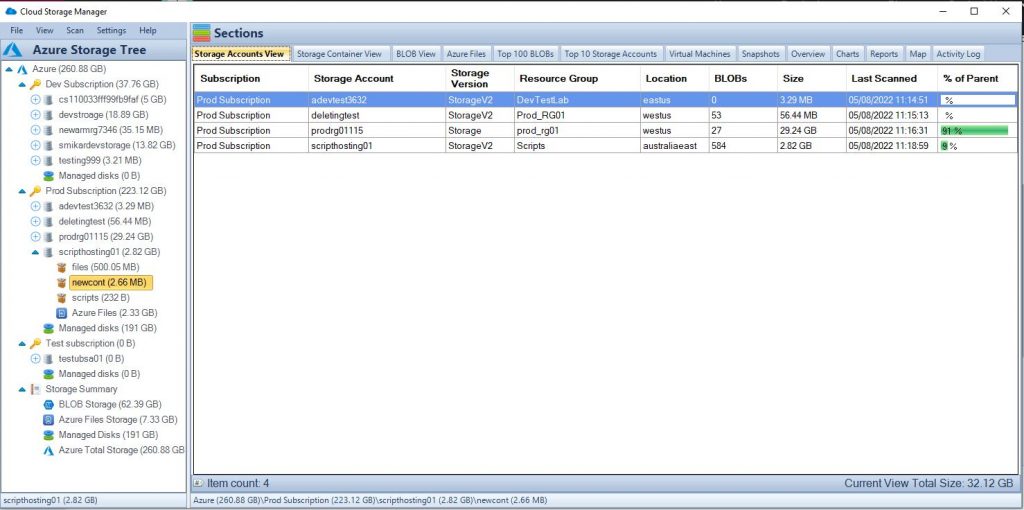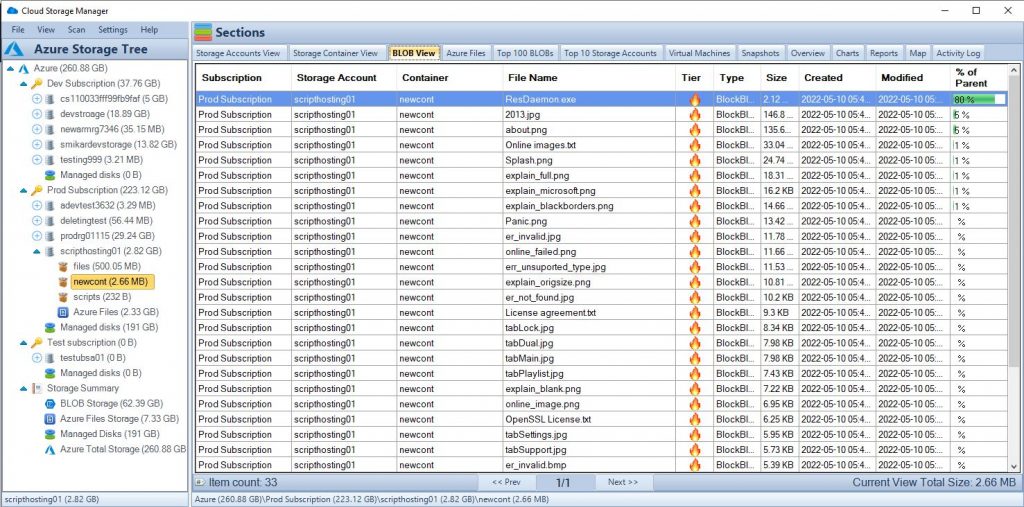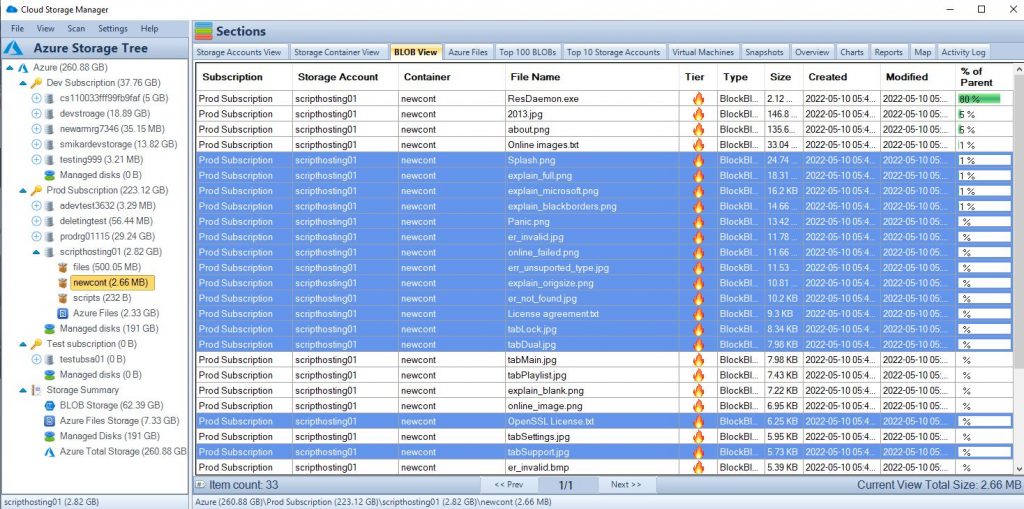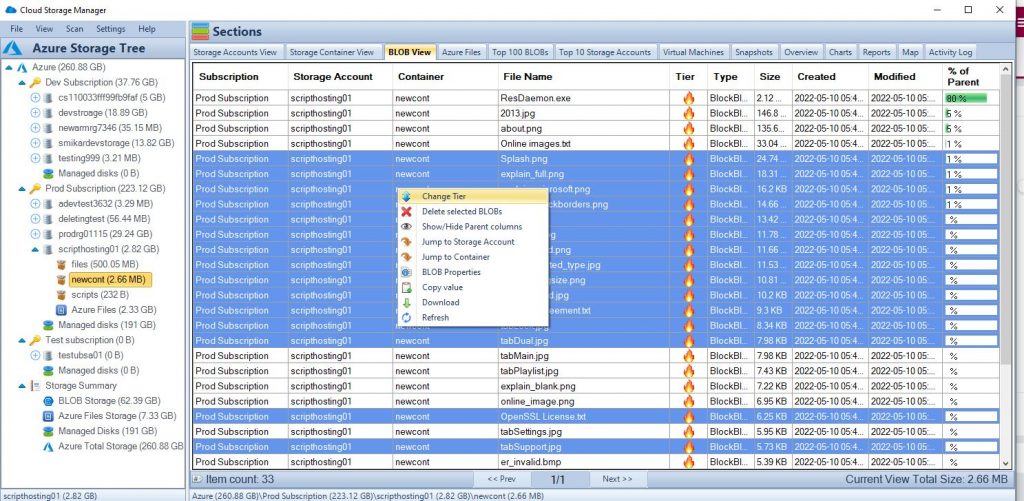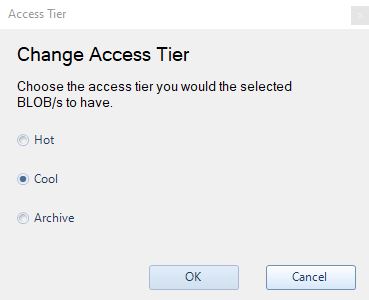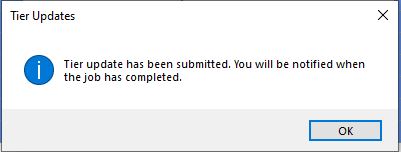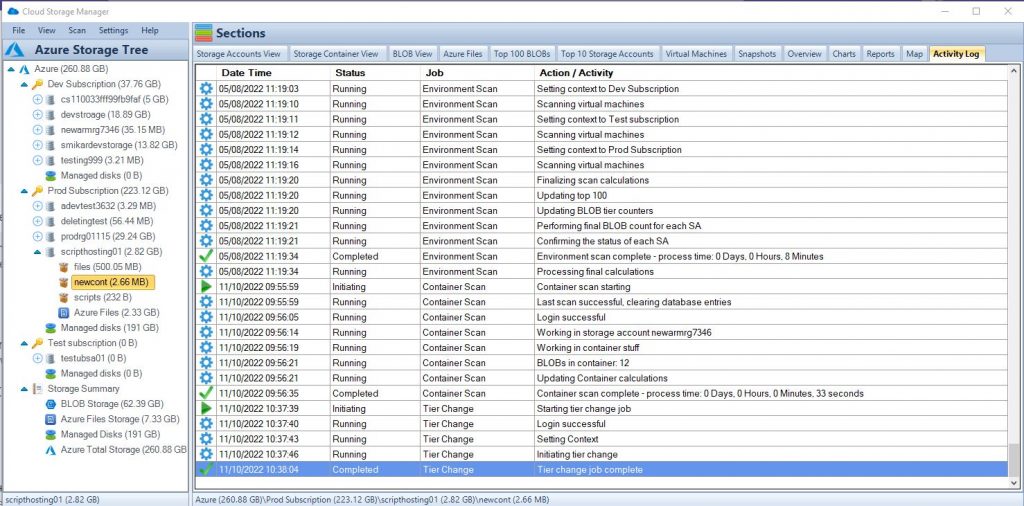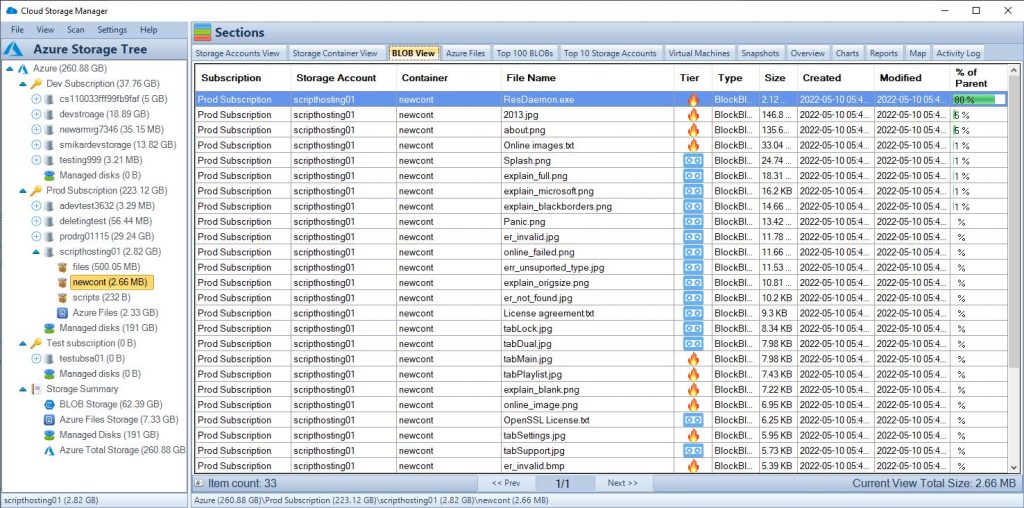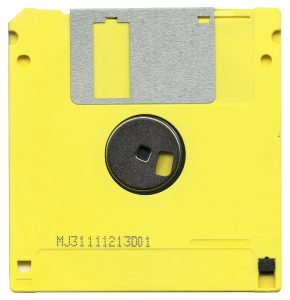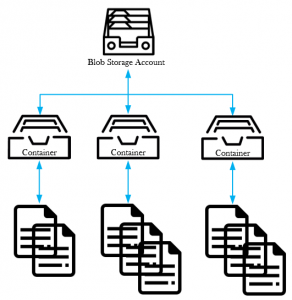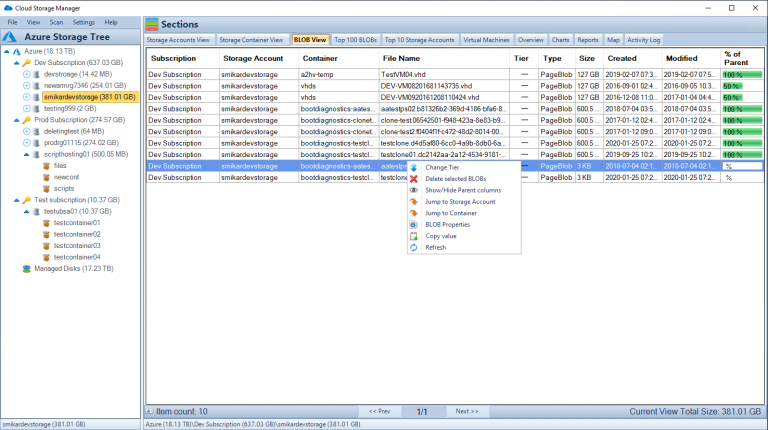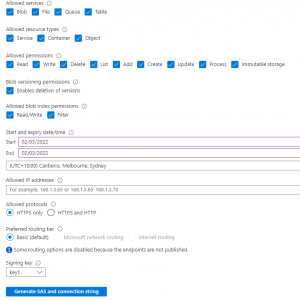
by Mark | Jan 21, 2023 | Azure, Blob Storage, Cloud Computing, Features, IAAS, Security, Storage Accounts
Azure Native Services Overview.
Azure native services are cloud-based solutions that are developed, managed, and supported by Microsoft. These services are designed to help organizations build and deploy applications on the Azure cloud platform, and take advantage of the scalability, security, and reliability of the Azure infrastructure. In this blog post, we’ll take a look at some of the key Azure native services that are available, and how they can be used to build and run cloud-based applications.
What are the native services in Azure?
Azure Virtual Machines Overview.
Azure Virtual Machines (VMs): Azure VMs allow you to create and manage virtual machines in the Azure cloud. You can choose from a variety of VM sizes and configurations, and you can use your own images or choose from a wide range of pre-configured images that are available in the Azure Marketplace. Azure VMs are a cost-effective way to run a wide range of workloads in the cloud, including web servers, databases, and applications.
Azure Virtual Machines (VMs) are a service provided by Microsoft Azure that allow users to create and run virtual machines in the cloud. VMs are based on a variety of operating systems and can be used for a wide range of workloads, including running applications, hosting websites, and performing data processing tasks.
With Azure VMs, users can quickly spin up a new VM, choosing from a variety of pre-configured virtual machine images or creating their own custom image. Users also have the ability to scale the resources of a VM (such as CPU and memory) up or down as needed, and can also create multiple VMs in a virtual network to build a scalable and fault-tolerant solution.
Azure VMs also provide an additional layer of security by allowing to apply security policies, firewall and also integrate with Azure AD for identity-based access to the VMs.
Additionally, Azure VMs can be combined with other Azure services, such as Azure Storage and Azure SQL Database, to create a complete and highly-available solution for running applications and storing data in the cloud.
Azure Kubernetes Service Overview.
Azure Kubernetes Service (AKS): AKS is a fully managed Kubernetes service that makes it easy to deploy, scale, and manage containerized applications. With AKS, you can deploy and run containerized applications on Azure with just a few clicks, and you can scale your deployments up or down as needed to meet changing demand. AKS is a great choice for organizations that are looking to build cloud-native applications that are scalable, resilient, and easy to manage.
AKS makes it easy to deploy and manage a Kubernetes cluster on Azure, allowing developers to focus on their applications, rather than the underlying infrastructure.
AKS is built on top of the Kubernetes open-source container orchestration system and enables users to quickly create and manage a cluster of virtual machines that run containerized applications.
With AKS, users can easily deploy and scale their containerized applications and services, and can also take advantage of built-in Kubernetes features such as automatic scaling, self-healing, and rolling updates. Additionally, it allows you to monitor and troubleshoot the kubernetes clusters with the help of Azure Monitor and log analytics.
AKS also integrate well with other Azure services, such as Azure Container Registry, Azure Monitor and Azure Active Directory to provide a complete solution for managing containerized applications in the cloud. Additionally, AKS supports Azure DevOps and other CI/CD tools.
By using AKS, organizations can benefit from the flexibility and scalability of containers, and can also take advantage of Azure’s global network of data centers and worldwide compliance certifications to build and deploy applications with confidence.
Azure Functions Overview.
Azure Functions: Azure Functions is a serverless compute service that allows you to run code in response to specific triggers, such as a change in data or a request from another service. Azure Functions is a great way to build and deploy microservices, and it’s especially useful for organizations that need to process large volumes of data or perform tasks on a regular schedule.
Azure Functions is a serverless compute service provided by Microsoft Azure that allows developers to run event-triggered code in the cloud without having to provision or manage any underlying infrastructure.
Azure Functions allows developers to write code in a variety of languages, including C#, JavaScript, F#, Python, and more, and can be triggered by a wide range of events, including HTTP requests, messages in a queue, or changes in data stored in Azure. Once an Azure Function is triggered, it is executed in an ephemeral container, meaning that the developer does not need to worry about the underlying infrastructure or scaling.
Azure functions are designed to be small, single-purpose functions that respond to specific events, they can also integrate with other Azure services and connectors, to create a end-to-end data processing and workflow pipelines.
Azure Functions provide an efficient and cost-effective way to run and scale code in the cloud. Because Azure automatically provisions and scales the underlying infrastructure, it can be a cost-effective option for running infrequently used or unpredictable workloads. Additionally, Azure functions can be hosted in Consumption Plan, App Service Plan or as a Kubernetes pod, this provide more flexibility and options for production workloads.
Overall, Azure Functions is a powerful, serverless compute service that enables developers to build and run event-driven code in the cloud, without having to worry about the underlying infrastructure.
Azure SQL Database Overview.
Azure SQL Database is a fully managed relational database service provided by Microsoft Azure for deploying and managing structured data in the cloud. Azure SQL Database is built on top of Microsoft SQL Server and is designed to make it easy for developers to create and manage relational databases in the cloud without having to worry about infrastructure or scaling.
Azure SQL Database supports a wide range of data types and provides robust security features, such as transparent data encryption and advanced threat protection. Additionally, it provides built-in High availability and disaster recovery options which eliminates the need to setup and configure on-premises infrastructure.
With Azure SQL Database, developers can quickly and easily create a new database and start working with data, while the service automatically manages the underlying infrastructure and scaling. Additionally, it provides rich set of tools for monitoring, troubleshooting and performance tuning the databases.
Azure SQL Database also provides a number of options for deploying and managing databases, including single databases, elastic pools and Managed Instance. Single databases and elastic pools are ideal for smaller workloads with predictable traffic patterns and Managed Instance is suitable for larger and more complex workloads which needs more control over the infrastructure.
Azure SQL Database can be integrated with other Azure services, such as Azure Data Factory and Azure Machine Learning, to create a complete data platform for building and deploying cloud-based applications and services.
Azure Storage Overview.
Azure Storage is a cloud-based service provided by Microsoft Azure for storing and managing unstructured data, such as binary files, text files, and media files. Azure Storage includes several different storage options, including Azure Blob storage, Azure File storage, Azure Queue storage, and Azure Table storage.
Azure Blob storage is designed for unstructured data and is optimized for storing large amounts of unstructured data, such as text or binary data. It allows to store and access massive amounts of unstructured data, such as text or binary data, and serves as the foundation of many other Azure services, including Azure Backup, Azure Media Services and Azure Machine Learning.
Azure File storage is a service that allows you to create file shares in the cloud, accessible from any SMB 3.0 compliant client. This can be useful for scenarios where you have legacy applications that need to read and write files to a file share.
Azure Queue storage is a service for storing and retrieving messages in a queue, used to exchange messages between components of a distributed application.
Azure Table storage is a service for storing and querying structured NoSQL data in the form of a key-value store.
All these services allows you to store and retrieve data in the cloud using standard REST and SDK APIs, and they can be accessed from anywhere in the world via HTTP or HTTPS.
Azure Storage also provides built-in redundancy and automatically replicates data to ensure that it is always available, even in the event of an outage. It also provides automatic load balancing and offers built-in data protection, data archiving, and data retention options.
With Azure Storage, developers can easily and cost-effectively store and manage large amounts of unstructured data in the cloud, and take advantage of Azure’s global network of data centers and worldwide compliance certifications to build and deploy applications with confidence.
Azure Networking Overview.
Azure Networking is a set of services provided by Microsoft Azure for creating, configuring, and managing virtual networks, or VNet, in the cloud. Azure Networking allows users to connect Azure resources and on-premises resources together in a secure and scalable manner.
With Azure Virtual Network, you can create a virtual representation of your own network in the Azure cloud, and define subnets, private IP addresses, security policies, and routing rules for those subnets. Virtual Network allows you to create fully isolated network environment in Azure, this includes ability to host your own IP addresses, and also use your own domain name system (DNS) servers.
Azure ExpressRoute enables you to create private connections between Azure data centers and infrastructure that’s on your premises or in a colocation facility. ExpressRoute connections don’t go over the public internet, and they offer more reliability, faster speeds, and lower latencies than typical connections over the internet.
Azure VPN Gateway allows you to create secure, cross-premises connections to your virtual network from anywhere in the world. You can use VPN gateways to establish secure connections to your virtual network from other virtual networks in Azure, or from on-premises locations.
Azure Load Balancer distributes incoming traffic among multiple virtual machines, ensuring that no single virtual machine is overwhelmed by too much traffic. Load Balancer supports external or internal traffic, also it is agnostic to the underlying protocols.
Azure Network Security Group allows you to apply network-level security to your Azure resources by creating security rules to control inbound and outbound traffic.
Overall, Azure Networking services provide a comprehensive set of tools for creating, configuring, and managing virtual networks in the cloud, and allows organizations to securely connect their Azure resources with on-premises resources. It also provides a set of security features to protect the resources in the network.
Azure Native Services Conclusion.
In conclusion, Azure native services provide a powerful and flexible platform for building and running cloud-based applications. Whether you’re looking to create a new application from scratch, or you’re looking to migrate an existing application to the cloud, Azure has a range of native services that can help you achieve your goals. By using Azure native services, you can take advantage of the scalability, security, and reliability of the Azure infrastructure, and you can build and deploy applications that are designed to meet the needs of your organization.

by Mark | Jan 18, 2023 | Azure Blobs, Blob Storage, Cloud Computing, How To, Storage Accounts
Azure Storage Authentication Options
Azure Storage Authentication is the process of verifying the identity of a client that is requesting access to an Azure storage account. Azure Storage supports several authentication options that can be used to secure access to storage accounts, such as:
- Shared Key Authentication: This method of authentication uses a shared key that is known to both the client and the storage account to sign request headers.
- Shared Access Signature (SAS) Authentication: This method of authentication uses a shared access signature (SAS) token to provide restricted access to a storage account. A SAS token can be generated for a specific resource or set of resources within a storage account and can be used to grant read, write, or delete access to that resource.
- Azure Active Directory (AAD) Authentication: This method of authentication allows you to secure access to a storage account using Azure AD. By connecting a storage account to Azure AD, you can use Azure AD authentication to grant access to specific users or applications that are already authenticated with Azure AD.
- OAuth Authentication: This method of authentication allows you to authenticate with Azure Storage using an OAuth 2.0 Bearer Token. The token is passed in the Authorization header and is verified by Azure Storage.
- Token-based Authentication: This method of authentication is an advanced authentication method and includes authentication with SAS, OAuth 2.0 bearer tokens and JSON Web Tokens (JWT)
Choosing the best authentication option depends on your requirements such as security, ease of use and ease of integration with existing systems or platforms. For example, for testing or development purposes, Shared Key authentication can be sufficient and easier to implement, but for production environments that requires high level of security or integration with enterprise environments you may prefer to use Azure AD or OAuth.
How to connect your Azure Storage Accounts to your On-Premise Active Directory
Connecting a storage account to an on-premises Active Directory (AD) allows you to secure access to the storage account using on-premises AD authentication. This can be useful in scenarios where you want to provide access to the storage account to a specific group of users or applications that are already authenticated with your on-premises AD.
Here’s an overview of the process for connecting a storage account to an on-premises AD:
- Create a Domain Name System (DNS) alias: To connect to the on-premises AD, you will need to create a DNS alias that points to the on-premises AD. This can be done by creating a CNAME record in your DNS server.
- Configure the storage account to use AD authentication: In the Azure portal, go to the storage account settings and enable AD authentication for the storage account. You will need to provide the DNS alias that you created earlier and specify the domain name of your on-premises AD.
- Create a group in the on-premises AD: To grant access to the storage account, you will need to create a group in your on-premises AD. This group will be used to manage access to the storage account.
- Assign the storage Blob Data Contributor role to the group: To grant access to the storage account, you will need to assign the storage Blob Data Contributor role to the group. This role allows the members of the group to manage blobs in the storage account
- Add users or computer to the group: To grant access to storage account you should add users or computer to the group you created in step 3
It’s worth to mention that this process requires that you have your own domain controller and DNS server, and that your azure storage account and your on-premise network should be connected through a VPN or ExpressRoute.
Also, it would require an ADFS or other third party solution to facilitate the integration and trust relationship between on-premises AD and Azure AD.

by Mark | Jan 15, 2023 | Azure, Cloud Computing, Security, Storage Accounts
Azure SFTP Service with Azure Storage overview
Azure SFTP (Secure File Transfer Protocol) is a service provided by Microsoft Azure that enables you to transfer files securely to and from Azure storage. The service is built on the SFTP protocol, which provides a secure way to transfer files over the internet by encrypting both the data in transit and the data at rest. Azure SFTP allows you to easily automate the transfer of large amounts of data such as backups and log files, to and from your Azure storage account. Additionally, it allows to set permissions and access control to limit access to specific users or groups.
Azure SFTP Service limitations and guidance
To use Azure SFTP, you will first need to create an Azure storage account. Once you have a storage account set up, you can create an SFTP server by going to the Azure portal and selecting the storage account you want to use. In the settings of the storage account, there is an option to create a new SFTP server.
Once the SFTP server is created, you will be provided with a unique hostname and port to connect to the server. To connect to the server, you will need to use an SFTP client, such as WinSCP or FileZilla. You will also need to provide your SFTP server credentials, which consist of a username and password.
Once you are connected to the SFTP server, you will be able to transfer files to and from your Azure storage account. The SFTP server will automatically create a new container within your storage account to store the files. You can also create new folders within the container to organize your files.
One of the benefits of using Azure SFTP is that it allows you to easily automate the transfer of files. You can use a tool like Azure Data Factory to schedule file transfers on a regular basis. Additionally, you can use Azure Automation to automate the creation of SFTP servers, which can save time and reduce the chances of human error.
Another benefit of using Azure SFTP is that it allows you to access your files securely from anywhere. The SFTP server uses industry standard encryption to protect your data in transit and at rest. Additionally, you can use Azure Role-Based Access Control (RBAC) to limit access to your SFTP server and storage account to specific users or groups.
There are some limitations to Azure SFTP that you should be aware of before using it. One limitation is that the SFTP server only supports a single concurrent connection per user. This means that if multiple people need to access the SFTP server at the same time, they will need to use different credentials. Additionally, Azure SFTP currently does not support SFTP version 6 or later, and it will not support it in near future.
Another limitation of Azure SFTP is that it does not currently support customization of SFTP server settings, such as the ability to change the default port or configure SSH options. Additionally, It does not support integration with other Azure services, such as Azure Monitor or Azure Security Center, for monitoring or logging of SFTP activity.
In conclusion, Azure SFTP is a powerful service that allows you to securely transfer files to and from Azure storage. It is easy to use, and can be automated to save time and reduce the chances of human error. It allows you to access your files securely from anywhere, and it uses industry standard encryption to protect your data in transit and at rest. However, it does have some limitations, such as not supporting multiple concurrent connections per user and not supporting customization of SFTP server settings.
How do you connect to Azure SFTP Service?
To connect to Azure SFTP Service, you will need to perform the following steps:
- Create an Azure storage account: You will need a storage account to create an SFTP server. You can create a storage account in the Azure portal or using Azure CLI or Azure PowerShell.
- Create an SFTP server: Go to the Azure portal, select your storage account, and then select the option to create a new SFTP server. Once the SFTP server is created, you will be provided with a unique hostname and port to connect to the server.
- Install an SFTP client: To connect to the SFTP server, you will need to use an SFTP client such as WinSCP, FileZilla, or Cyberduck.
- Connect to the SFTP server: Use the hostname and port provided in step 2, along with the SFTP server credentials (username and password) to connect to the SFTP server via the SFTP client.
- Transfer files: Once you are connected to the SFTP server, you can transfer files to and from your Azure storage account. By default, the SFTP server will create a new container within your storage account to store the files.
It is also worth mentioning that once you connect to the SFTP server you will have an access to all the capabilities of the SFTP protocol, including creation, deletion, editing, copying and moving of files, as well as folder structure management.

by Mark | Jan 12, 2023 | Azure, Azure Blobs, Blob Storage, Cloud Computing, Storage Accounts
What are Azure Files?
Azure Files is a fully managed, cloud-based file storage service provided by Microsoft Azure that allows you to share files across multiple servers and platforms. One of the key features of Azure Files is the ability to create and organize files in folders, similar to how you would on a traditional file server. In this blog post, we’ll take a closer look at how folders work in Azure Files and how you can use them to share files with others.
Azure Files Overview.
First, it’s important to understand the difference between a file share and a folder in Azure Files. A file share is the top-level object in Azure Files and acts as a logical grouping of file data. Each file share can have an unlimited number of files and folders, but cannot have sub-shares. On the other hand, a folder is a virtual directory within a file share, and can contain both other folders and files.
Folders in Azure Files are not actual directories, but rather a virtual way of organizing your files. When you upload a file to a share, you can specify the path of the file within the share using a forward slash (/) as a delimiter. This creates the appearance of a hierarchical file system, where the forward slashes indicate the level of nesting. For example, if you upload a file to the share “myshare” with the path “documents/finance/budget.xlsx,” this creates the appearance of a folder “documents” within the share “myshare” containing a subfolder “finance” which in turn contains the file “budget.xlsx”.
How do you use Azure Files?
Folders in Azure Files can be created, deleted and listed in the same way as files, but the main difference is that folders do not have any properties and do not consume any storage. Instead, the size of a folder is determined by the size of the files within it.
One of the main benefits of using folders in Azure Files is the ability to share files with others. Azure Files allows you to create a shared access signature (SAS) for a specific folder, which can be used to grant read or write access to the files within that folder. This can be useful in scenarios where you need to share a group of files with a specific set of users, without giving them access to the entire file share.
Another benefit of using folders in Azure Files is that it allows for better organization and management of your files. By using folders, you can easily group files by project, department, or date, making it easier to find and manage your data, especially if you have a large amount of files in your share.
Folders in Azure Files also integrate well with other Azure services like Azure Data Factory, Azure Logic Apps and Azure Functions, with the ability to mount the file share as a network drive and access the data with the standard file system operations, you can easily automate data movement, workflows and integration with other services that need access to the files in the share.
In conclusion, folders in Azure Files are a powerful feature that can help you share and organize files more effectively. They can help you create a hierarchical file system, grant access to specific groups of users, and integrate with other Azure services. If you’re working with large amounts of files and need to share them with others, it’s worth taking the time to consider how you can use folders in Azure Files to make it more manageable and organized.
Now that you know a little about Azure Files, be sure to download a Trial of Cloud Storage Manager, which provides you further insights not only in to your Azure Files storage, but also Azure Blob Storage
Real-World Use Cases for Azure Files
Azure Files has a wide range of practical use cases. For businesses looking to transition from traditional on-premises file servers, Azure Files provides a scalable, cloud-based alternative that enables file sharing across departments, regions, and devices. An example use case is replacing on-prem file servers for businesses with multiple locations, enabling real-time collaboration and access to shared company documents. Azure Files can also support application data storage, allowing distributed applications to share data seamlessly. For development environments, it provides a consistent storage solution across Windows and Linux-based applications, facilitating easy file sharing between virtual machines.
Additionally, Azure File Sync allows businesses to keep critical files available locally while syncing data to the cloud, giving the benefits of cloud scalability while maintaining high-performance access for frequently used files.
Security Features of Azure Files
Azure Files implements enterprise-grade security features to ensure that your data is both protected and compliant. It supports integration with Azure Active Directory (Azure AD), providing centralized identity and access management for users across your organization. With Azure AD, administrators can define Role-Based Access Control (RBAC), granting different levels of access to users or groups, making it easy to ensure sensitive files are only accessible by authorized personnel.
Furthermore, encryption at rest and in transit is a standard feature with Azure Files. This means that data is protected when stored in the cloud and when being accessed or transferred over the network. Microsoft’s encryption complies with various regulatory standards, such as HIPAA, ISO 27001, and SOC 1/2, ensuring that organizations in heavily regulated industries can use Azure Files with confidence. For additional protection, you can also implement shared access signatures (SAS), which allows you to provide temporary, limited access to specific files without sharing your full storage account credentials.
Integration with Hybrid Environments and Cloud Services
One of the significant benefits of Azure Files is its ability to integrate with both cloud-based and on-premises systems. Through Azure File Sync, businesses can synchronize their on-prem file shares with Azure Files, enabling hybrid cloud scenarios. This is particularly useful for companies that need high-performance local access to certain files while taking advantage of the cloud’s scalability and redundancy for archiving or less frequently accessed data.
Azure Files is fully compatible with Azure Virtual Machines (VMs) and Azure Kubernetes Service (AKS). This makes it a valuable storage solution for companies running cloud-based applications. For example, applications running in Kubernetes clusters can use Azure Files as a persistent volume to store stateful data, ensuring data persists across container restarts. Similarly, Windows and Linux VMs can mount Azure Files shares, making it easy to share data between applications hosted on different VMs or platforms. This flexibility allows businesses to streamline their operations, reducing infrastructure complexity and enhancing the efficiency of hybrid environments.
Comparison to Alternatives: Azure Blob Storage and On-Premises Solutions
Azure Files and Azure Blob Storage both offer scalable cloud storage, but they cater to different needs. Azure Blob Storage is optimized for storing unstructured data like backups, logs, and media files, making it ideal for archiving large amounts of data that don’t need frequent access. On the other hand, Azure Files shines in scenarios that require traditional file sharing with consistent, platform-agnostic access. It offers SMB and NFS protocols, allowing integration with legacy systems and applications that rely on traditional file shares, something Blob Storage cannot do.
Compared to on-premises file servers, Azure Files significantly reduces the overhead of managing physical infrastructure. Traditional servers require ongoing hardware maintenance, periodic upgrades, and manual scaling as storage needs grow. In contrast, Azure Files offers automated scaling, high availability, and built-in redundancy without the need for manual intervention. Disaster recovery and business continuity are also simplified with Azure Files since all data is replicated across multiple regions for resilience. Moreover, Azure Files eliminates the capital expense associated with maintaining on-premises file servers, offering a more flexible, pay-as-you-go model.

by Mark | Oct 11, 2022 | Azure, Azure Blobs, Features, How To, Storage Accounts
If you are an Azure Cloud Storage user, you will know that Azure offers three different storage tiers for storing data: hot, cool, and archive tiers. These Azure Storage tiers offer different levels of performance and cost efficiency. In this post, we’ll show you how to move blob content between these storage tiers, whether it is an individual Azure Blob, multiple Azure Blobs, or all the Azure Blobs in your Storage Accounts, using Cloud Storage Manager.
Why Change Azure Blob Tiering?
There are cost benefits to moving your Azure Blobs down to a lower Storage Tier. Hot is the most expensive, with cool a little bit cheaper, and the Archive Blob Tier having the lowest cost option. For more Azure Storage Cost-saving ideas, we cover some great cost-saving initiatives in another blog, or perhaps you want to see just how much Azure Storage you are consuming across your complete Microsoft Tenancy in this blog. These are just some of the functions you can perform with Cloud Storage Manager.
Cloud Storage Manager is a powerful tool for managing your Azure Cloud Storage. In this blog post, I will show you how easy it is to move a single Azure Blob or even select multiple or the complete container and move those blobs from any storage tiering to another with just a few clicks.
Easily change single, multiple or all your Blobs to any selected Azure Storage Tier
In this blog post, I will show you how easy it is to move a single Azure Blob or even select multiple or the complete container and move those blobs from any storage tiering to another with just a few clicks.
There are cost benefits moving your Azure Blobs down to a lower Storage Tier, Hot being the most expensive, with a cool a little bit cheaper, and the Archive Blob Tier having the lowest cost option. For more Azure Storage Cost saving ideas, we cover some great cost saving initiatives in another blog, or perhaps you wont to see just how much Azure Storage you are consuming across your complete Microsoft Tenancy in this blog. These are just some of the functions you can perform with Cloud Storage Manager.
Now perhaps you want to setup Azure Storage Lifecycle Management Policy, which will automatically move Azure Blobs to the Azure Storage Tier when certain conditions have been met. Well in one of our previous blog posts shows you exactly how to do this.
This blog post however, is if you would like to manually move a single or bulk amount of Azure Blobs to a different storage tier.
Launch Cloud Storage Manager
Hopefully you have installed Cloud Storage Manager and have completed a full scan of your Azure Storage Accounts.
If you havent installed it yet, or want to download a Demo and try it for yourself, you can get a trial by visiting this page.
So moving on, Ill assume have the above completed. First Open Cloud Storage Manager and navigate by the Azure Storage Tree and locate the Storage Account you want to change the Blob Storage Tiering for.

Select the Blob View
Select the Azure Storage Container you want to change the Blob Tiering for, then select the Blob View Window.
Here you will see information about all the Azure Blobs in that Storage container.
You will notice the Tiering of each of the Blobs, with a Fire Symbol showing they are in the Hot Storage Tier, an Icycle Symbol showing they reside in the Cool Storage Tier, or lastly a Tape Icon detailing the Azure Blobs are in the Azure Archive Storage Tier.

Select the Blobs you want to change Storage Tiering for.
Now from this view you can see all the Azure Blobs in that Storage Container.
See details like the Blob Name, which Subscription, Storage Account and Container the Blob resides in, also the size, Tiering (of course thats why we are here), when the Blob was created and last modified.
Simply select the Azure Blobs you want to change the Tiering of, using control and a left click of the mouse to select multiple individual Blobs, or press Control and A to select them all.

Select individual or multiple Azure Blobs.
Now right click a Blob and you will be shown the Cloud Storage Manager right click menu.
You can perform the folliwing functions to selected Azure Blobs from this menu;
- Change the Tier of the selected Azure Blobs
- Delete the Selected Azure Blobs
- Show or Hide the Parent Columns
- Jump back to the Storage Account Window
- Jump back to the Container Window
- See the Blob Properties
- Copy the Values displayed of the Blobs
- Download the selected Blobs to your own Computer
- Refresh the view you are currently looking at.
Now, since we are wanting to change the tiering of the selected Azure Blobs, I am going to left click on Change Tier

Select individual or multiple Azure Blobs.
This is where we now select which tier you want the selected Azure Blobs changed to.
In this example, Ill move those Blobs to the Archive Storage Tier.
Select Archive Tier and then click on OK.

Azure Blob Tiering Change
Cloud Storage Manager has now initiated a tiering change job for all the Azure Blobs I have selected.
Cloud Storage Manager will now change the storage tiering type for each of these Azure Blobs selected.

Check the status of the Blob Tiering Change
You can see the status of Azure Blob Tiering change by viewing the Activity Log within Cloud Storage Manager.
Each of those Blobs selected are now being moved to the Azure Blob Storage Archive Tier.

View the change in Tiering of your Azure Blobs
Now go back to the Blob view of the Storage Container we orginally selected.
You can see here that those Azure Blobs I selected have now changed to the Archive Tier.
And thats all there is to it, we changed selected Azure Blobs storage tiers from the Hot Tier to the Archive Tier with just a few clicks.
If you want to trial Cloud Storage Manager for yourself, simply visit the Cloud Storage Manager product page and download a trial for yourself.
Not only can Cloud Storage Manager change the tiering of bulk amounts of Azure Blobs with a few clicks, you can also see which Storage Accounts are not being used, and gain further insights in to your Azure Storage Consumption.

Azure Blob Storage Tiering FAQs
| Question |
Answer |
What does blob stand for in Azure?
|
Blob stands for Binary Large OBject. |
|
|
The 3 tiers of blob storage are Hot, Cool, and Archive. |
|
|
Block blobs are used for streaming and storing large binary objects. Append blobs are used for logging scenarios. Page blobs are used for random read/write operations. |
What is hot tier in used for in Azure Storage?
|
The Hot tier is used for frequently accessed data that requires high-performance access times. |
What is the cold tier used for in Azure Storage?
|
The Cool tier is used for infrequently accessed data that requires low-cost storage. |
What is the archive tier used for in Azure Storage?
|
The Archive tier is used for rarely accessed data that needs to be stored for a long time at a very low cost. |
What is the difference between blob and block blob?
|
Blob is a general term for data stored in Azure Storage. Block blobs are a type of blob that are used for large binary objects. |
What is the content type of Azure blobs?
|
Azure blobs can have any content type specified by the user. |
How can I get the consumption of my Azure Blob Storage?
|
Use Cloud Storage Manager to provide you with an overview and more indepth insights in to your Azure Storage consumption. Find out exactly how much storage each storage account, container or folder contains. |
|
|
Yes, Azure blob storage is equivalent to S3 in AWS. |
Is Azure blob storage a data lake?
|
No, Azure blob storage is not a data lake. |
Can Azure blob storage store structured data?
|
Yes, Azure blob storage can store structured data in the form of text, JSON, or XML files. |
What is the maximum number of blob containers in an Azure storage account?
|
The maximum number of blob containers in an Azure storage account is 500,000. |

by Mark | Feb 3, 2022 | Azure, Azure Blobs, Comparison, Storage Accounts
Are you confused about which Azure Storage Service to use, for mapping a drive, or just dumping large amounts of data in to? This post goes indepth in to the differences between Azure Blob Storage and Azure File Services.
Azure Blob Storage vs Azure File Storage:
Choosing the Right Storage Solution for Your Business

In today’s digital age, data storage is an essential part of any business strategy. As more and more businesses move their operations to the cloud, choosing the right storage solution can make a significant impact on your organization’s efficiency and productivity. Azure, Microsoft’s cloud computing platform, offers two primary storage solutions: Azure Blob Storage and Azure File Storage.
In this article, we’ll take a closer look at both Azure Blob Storage and Azure File Storage and help you decide which one is the best fit for your business.
What is Azure Blob Storage?
Azure Blob Storage is a massively scalable object storage service that allows you to store and manage large amounts of unstructured data. It is ideal for storing files such as videos, images, audio, and text documents. Blob storage is designed to handle large amounts of data and can scale to meet your business needs, making it an excellent choice for businesses that require large-scale data storage.
Benefits of Azure Blob Storage
- Massive Scalability: Azure Blob Storage can handle massive amounts of data and can scale to meet your business needs.
- Cost-Effective: Blob storage offers a cost-effective solution for storing large amounts of unstructured data.
- Durability: Data stored in Blob storage is highly durable and can be replicated across different regions to ensure high availability.
- Security: Blob storage provides granular access control, allowing you to control who can access your data.
- Integration: Blob storage can easily integrate with other Azure services, making it easy to build scalable and reliable applications.

What is Azure File Storage?
Azure File Storage is a fully managed file sharing service that allows you to share files with both Windows and Linux clients. It is ideal for storing structured data such as application data and virtual machine files. With Azure File Storage, you can access your files from anywhere and at any time, making it an excellent choice for businesses with remote workers or multiple office locations.
Benefits of Azure File Storage
- Fully Managed: Azure File Storage is a fully managed service, which means that Microsoft takes care of the infrastructure and maintenance, allowing you to focus on your business.
- Easy to Use: Azure File Storage is easy to set up and use, with a simple interface that allows you to manage your files from anywhere.
- Secure: Azure File Storage provides granular access control, ensuring that your data is secure.
- Integration: Azure File Storage can easily integrate with other Azure services, making it easy to build scalable and reliable applications.
- Multi-Platform: Azure File Storage supports both Windows and Linux clients, making it a versatile option for businesses with a variety of operating systems.

Choosing the Right Storage Solution
Now let’s explore the key differences between Azure Blob Storage and Azure File Storage.
Structure
Azure Blob Storage stores data as blobs within containers, allowing for a flat storage structure. In contrast, Azure File Storage uses a hierarchical structure, with directories and subdirectories, similar to a traditional file system.
Access
Blob Storage supports REST APIs, Azure Storage SDKs, and Azure Storage Explorer for data access. File Storage allows access via the SMB protocol, enabling you to mount file shares directly to your virtual machines or on-premises systems.
Scalability
Blob Storage can scale to store petabytes of data, with individual blobs up to 4.75 TB in size. File Storage, while still scalable, has a maximum share size of 100 TiB.
Performance
Blob Storage provides higher throughput and lower latency than File Storage. However, File Storage offers better performance for small file read and write operations, which can be crucial for specific applications.
Security
Both services provide data encryption at rest and in transit. However, Blob Storage also supports object-level access control through shared access signatures, while File Storage relies on share-level access control.
When choosing between Azure Blob Storage and Azure File Storage, it’s important to consider your business’s needs. If you need to store large amounts of unstructured data such as videos, images, and audio, Azure Blob Storage is the best choice. If you need to store structured data such as application data and virtual machine files and share files with Windows and Linux clients, Azure File Storage is the better option.
Azure Blob Storage FAQs:
What types of data can I store in Azure Blob Storage?
You can store various types of unstructured data, including text, images, audio, and video files.
How scalable is Azure Blob Storage?
Azure Blob Storage is massively scalable and can handle large amounts of data. It can scale to meet your business needs.
Is my data safe in Azure Blob Storage?
Yes, your data is safe in Azure Blob Storage. Data stored in Blob storage is highly durable and can be replicated across different regions to ensure high availability. Blob storage also provides granular access control, allowing you to control who can access your data.
Can I integrate Azure Blob Storage with other Azure services?
Yes, you can easily integrate Azure Blob Storage with other Azure services, such as Azure Data Factory, Azure Functions, and Azure Stream Analytics.
How much does Azure Blob Storage cost?
Azure Blob Storage pricing is based on the amount of data stored, data access, and data transfer. You can find more information about Azure Blob Storage pricing on the Azure website.
Azure File Storage FAQs:
What types of data can I store in Azure File Storage?
You can store structured data such as application data and virtual machine files in Azure File Storage. It is designed for file sharing with Windows and Linux clients.
Is Azure File Storage easy to use?
Yes, Azure File Storage is easy to use, with a simple interface that allows you to manage your files from anywhere.
How secure is Azure File Storage?
Azure File Storage provides granular access control, ensuring that your data is secure. You can control who can access your data and what they can do with it.
Can I integrate Azure File Storage with other Azure services?
Yes, Azure File Storage can easily integrate with other Azure services, such as Azure Virtual Machines, Azure Backup, and Azure Site Recovery.
How much does Azure File Storage cost?
Azure File Storage pricing is based on the amount of data stored and data access. You can find more information about Azure File Storage pricing on the Azure website.
Azure Blob and File Storage Use Cases
| Use Case |
Azure Blob Storage |
Azure File Storage |
| Unstructured Data Storage |
Best suited for storing unstructured data, such as text, images, audio, and video files. |
Designed for structured data storage, such as application data and virtual machine files. |
| Data Access |
Provides block-level access to data, making it ideal for streaming and storing large media files. |
Provides SMB-based file access, making it ideal for sharing files across Windows and Linux clients. |
| Scalability |
Highly scalable and can handle large amounts of data. |
Can also scale to meet business needs, but not as well-suited for extremely large data sets. |
| Security |
Provides granular access control, ensuring that data is secure. |
Provides granular access control, ensuring that data is secure. |
| Integration |
Can integrate with other Azure services, such as Azure Data Factory, Azure Functions, and Azure Stream Analytics. |
Can easily integrate with other Azure services, such as Azure Virtual Machines and Azure Backup. |
How can I connect to Azure Blob Storage?
With Azure Blob Storage access is provided over HTTPS, so you cant traditionally mount Blob Storage as a mapped network drive to a Virtual Machine or Users desktop.
You can however browse all the Azure Blobs contained within this Storage Account through your web browser, using Microsoft’s Azure Storage Explorer, the Azure Storage Rest API, Powershell or even the Azure CLI. Alternatively, you can use our software, Cloud Storage Manager to do the same thing and more.

How can I connect to Azure File Storage?
As stated before, Azure File Services is more like your standard file server, in that you can create multiple network shares with folders and files within. These shares can of course be mapped directly to your machines as a network drive using the SMB protocol. To map a network drive to an Azure File Share, Microsoft lets you create a login script direct from the Azure Portal using powershell to connect the share.
Here is an example powershell script to connect an Azure File share to a users computer as a Y drive mapping.
$connectTestResult = Test-NetConnection -ComputerName storageaccountname.file.core.windows.net -Port 445
if ($connectTestResult.TcpTestSucceeded) {
# Save the password so the drive will persist on reboot
cmd.exe /C “cmdkey /add:`”storageaccountname.file.core.windows.net`” /user:`”localhoststorageaccoun`” /pass:`”longpasswordabcdefghijklmnopqrstuvwxyz`””
# Mount the drive
New-PSDrive -Name Y -PSProvider FileSystem -Root “\storageaccountname.file.core.windows.netfileservicestest” -Persist
} else {
Write-Error -Message “Unable to reach the Azure storage account via port 445. Check to make sure your organization or ISP is not blocking port 445, or use Azure P2S VPN, Azure S2S VPN, or Express Route to tunnel SMB traffic over a different port.”
}
With Azure Files you can also set NTFS permissions on the shares, folders and files. Additionally you can integrate this service with your Azure AD so that permissions can be set using normal AD groups and users.
One thing that differentiates Azure File Services from an on-premise File Server is that you can access the folders and files from anywhere with an internet connection.
Allow access to Azure Storage Account using a Shared Access Signature
The Shared Access Signature can be created to allow access over HTTP or HTTPS for a limited time to any of the Azure Storage Services. This includes Blob, File, Queue and Table Services.
You can be granular with the access you want to provide. Perhaps you have a third party that you only want to give access to your data and certain services for a fixed amount of time.
Options you can choose are;
- Allowed Services;
- Allowed Resource Types
- Allowed Permissions
- Read
- Write
- Delete
- List
- Add
- Create
- Update
- Process
- Immutable Storage
Choose this options carefully, as you can see you can be as granular as you want to allow access to your Azure Storage Accounts.

Whats a Use Case Example for Azure Blob Storage?
Azure Blob Storage has several use cases. Its great for the following types of data storage;
- Serving documents, images or videos direct to a browsers.
- Storing of files for quick and easy access
- Streaming video and audio
- Great for dumping of logs files for analysis
- A good target for backup files, archiving and disaster recovery.
Whats a Use Case Example for Azure File Storage?
Azure File Services is great for the following use cases;
- Replacing or supplementing your on-premise File Servers
- Allowing network share access to anywhere in the world with an internet connection
- Lift and Shift your applications to the Cloud that require a network share
- Improving the resilience and uptime of your network shares
- Removing the need to patch and maitain Windows File Servers
So what are the main differences between Azure Blob Storage and Azure File Services?
Item
|
Azure Blob Storage
|
Azure File Services
|
Tiering
|
Hot
Cool
Archive |
Premium
Transaction Optimized
Hot
Cool
Note – No Archive Tier available for Azure File Services |
Authentication
|
SAS Token
Storage Access Keys
Azure AD Integration
Anonymous public read access |
SAS Token
Storage Access Keys
Azure AD
On-Premise Active Directory – Synced with Azure AD |
Redundancy
|
LRS – Locally Redundant Storage
ZRS – Zone Redundant Storage
GRS – Geo Redundant Storage
GZRS – Geo Zone Redundant Storage |
LRS – Locally Redundant Storage
ZRS – Zone Redundant Storage
GRS – Geo Redundant Storage
GZRS – Geo Zone Redundant Storage |
Maximum Size
|
500TB |
100TiB per File Share |
Maximum File Size
|
Azure BLOBs are 2 types; Page and Block.
Max Page is 8TiB, max block is 200TiB |
1 TB per File |
Authentication
|
SAS Token
Storage Access Keys
Azure AD Integration
Anonymous public read access |
SAS Token
Storage Access Keys
Azure AD Integration
On-Premise Active Directory – Synced with Azure AD
|
Choosing the Right Storage Solution
When choosing between Azure Blob Storage and Azure File Storage, it’s important to consider your business’s needs. If you need to store large amounts of unstructured data such as videos, images, and audio, Azure Blob Storage is the best choice. If you need to store structured data such as application data and virtual machine files and share files with Windows and Linux clients, Azure File Storage is the better option.
In conclusion, Cloud Storage Manager is an effective tool that helps organizations to manage their Azure storage usage and costs. With its powerful features such as Map View, Tree View, Azure Storage Reporting, Azure Blob Search, and Azure Files Complete Overview, the software enables users to gain insights into their Azure Blob and Azure File storage consumption, identify the areas where costs can be reduced, and take appropriate actions. By visualizing Azure storage locations, browsing through Azure storage trees, generating reports, searching and scanning Azure storage accounts, users can quickly see where their storage is going and take back control of their Azure Blob storage costs. Cloud Storage Manager is a valuable tool that saves money, enhances productivity, and helps organizations to manage their storage accounts efficiently.






